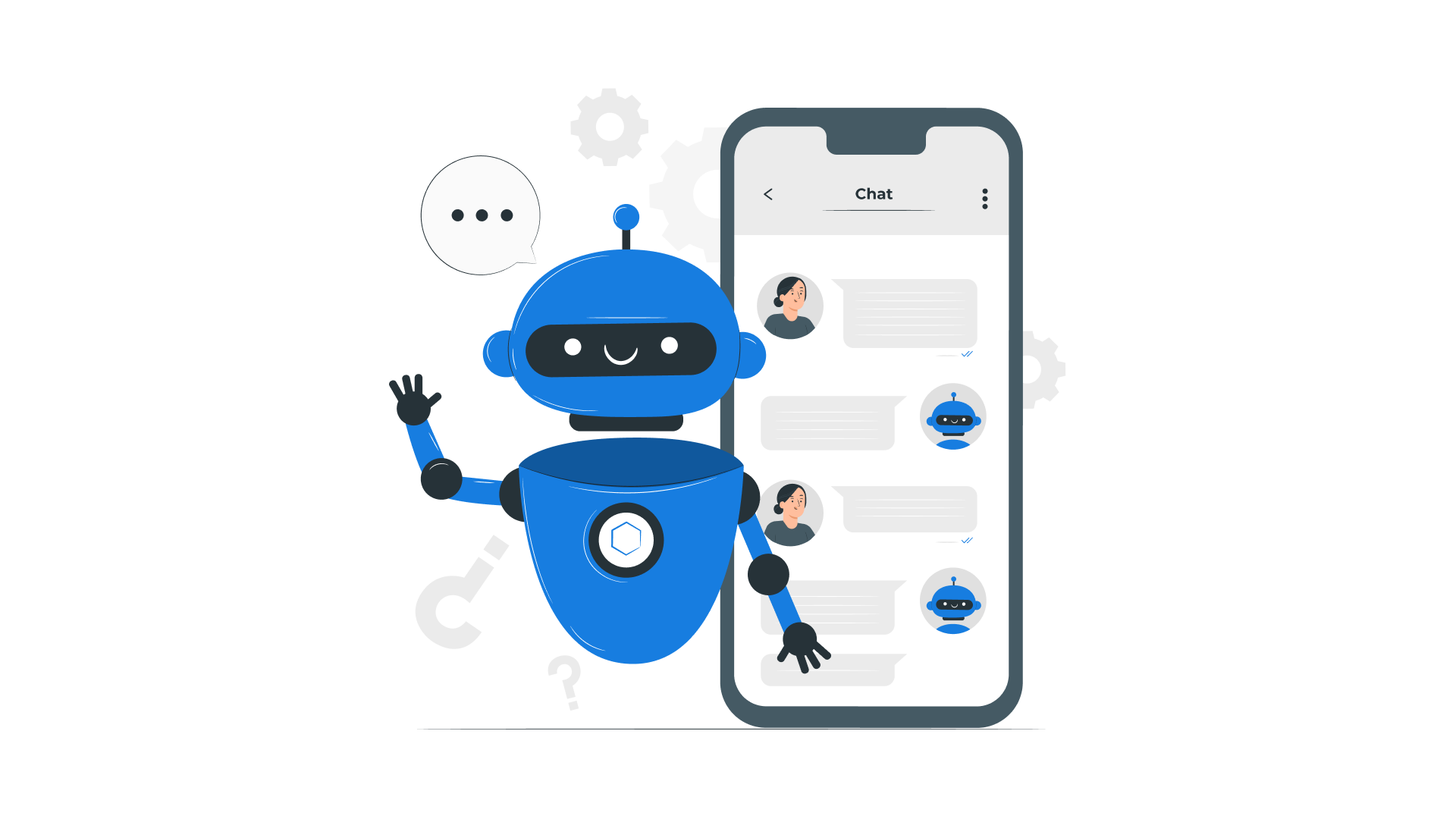Have you ever been frustrated while talking to customer support? Maybe you had to repeat yourself multiple times or felt like the agent just didn’t understand your issue. What if AI could change that? AI-powered chats are now being designed to recognize emotions and respond in a more human-like way. But can they truly build empathy in customer service? Let’s explore.

The Role of AI Chats for Building Empathy in Customer Service
Imagine you’re frustrated because your online order is delayed. You open the live chat on the website, expecting a long wait or robotic replies. But instead, an AI chatbot greets you by name, acknowledges your concern, and provides real-time updates on your order. It even suggests a faster alternative. You feel heard and appreciated. This is how AI Chats for Building Empathy in Customer Service are changing the game. By using artificial intelligence and natural language processing, AI chatbots can understand customer needs, respond seamlessly, and even personalize conversations to improve customer experience. Instead of feeling ignored, customers feel valued, leading to higher customer satisfaction.
But what happens when the issue is too complex? That’s where the human touch comes in. AI chatbots can handle customer queries efficiently, but when complex issues arise, they can automate the process of escalating the case to human agents. This balance between automation and real human interaction helps businesses improve customer service while making sure customers don’t feel like they’re just talking to a machine. Companies that use AI for AI customer service can analyze customer data, predict concerns, and even for the personalization of responses to connect with customers better. Instead of just answering questions, AI is now helping brands build trust and offer empathetic customer support.
How Can Conversational AI Understand and Respond to Customer Emotions?
AI may not have feelings, but it can analyze emotions through words, tone, and even the timing of responses. With sentiment analysis, AI can detect if a customer is angry, confused, or happy and adjust its response accordingly.
Here is what V. Frank Sondors, founder of Salesforge.ai, says about this:
“Conversational AI can understand and respond to emotions by analyzing factors like tone, word choice, and response timing. Sentiment analysis tools help the AI detect frustration, confusion, or satisfaction and adjust responses accordingly. For example, if a customer’s language suggests frustration, the AI might slow down and provide step-by-step guidance in a calm tone. This makes interactions feel more human and less transactional.”
Similarly, Josh Qian, the COO and Co-Founder of Best Online Cabinets, shares his view:
“Conversational AI can enhance its understanding of customer emotions through continuous learning and adaptation. It can analyze past interactions, identify emotional response patterns, and adjust its algorithms accordingly. Over time, the AI can become more adept at recognizing specific emotional triggers, allowing for more sensitive and relevant responses that resonate with customers.”
So, AI is improving in recognizing and responding to human emotions. But how does it help in reducing customer frustration?
Training AI to Sound More Human
Have you ever chatted with a support bot and felt like you were talking to a real person? That’s because AI-powered chatbots are now designed to show human empathy in conversations. Instead of giving robotic answers, they use machine learning to analyze customer feedback and improve their responses over time. The goal is not just to handle customer inquiries but to make interactions feel more natural. Businesses are using AI chatbots to create a more enhanced customer experience, ensuring customers feel heard and understood.
But how does this work? AI models are trained to understand emotions in customer interactions and respond with warmth and care. Here’s how companies train AI agents to sound more human:
- Analyzing past conversations – AI learns from real customer service agents to understand how to show empathy in different situations.
- Personalizing responses – Instead of generic answers, AI uses customer data to provide tailored replies.
- Improving with AI empathy – By continuously learning from customer inquiries, AI can better recognize frustration, confusion, or happiness.
- Balancing AI and human support – While AI-powered customer service handles basic queries, complex issues go to customer service representatives for better service delivery.
- Helping human agents to focus – By managing repetitive tasks, AI allows the support team to give more attention to critical cases.
With generative AI and AI solutions, businesses can launch an AI system that improves customer engagement and overall customer care. AI is not here to replace humans but to work alongside them, making enhancing customer service easier for both customers and companies.
Can This Technology Reduce Frustrations in Support Calls or Chats?
Reducing Customer Frustration with Smart AI
This balance between AI and human support is what truly transforms customer support operations. When businesses use AI smartly, they’re not just automating tasks, they’re enhancing the customer experience by reducing frustration. Think about a time when you needed quick help but had to wait endlessly for a response. Now, AI can handle those customer service tasks, giving instant answers to frequently asked questions and directing complex issues to human agents. This makes making customer interactions smoother and more satisfying.
But AI does more than just speed things up. It brings emotional intelligence into AI Chats for Building Empathy in Customer Service. By analyzing data from customer interactions, AI can predict customer needs and personalize responses based on customer emotions. A study in Harvard Business Review found that AI-driven support not only improves efficiency but also builds trust. When AI can offer quick, relevant solutions, it leads to increased customer happiness, customer satisfaction and loyalty, and an outstanding customer experience.
V. Frank Sondors explains how AI helps:
“AI has the potential to reduce frustrations during support calls or chats by addressing common issues quickly and escalate complex concerns to a human agent when needed. For one of our clients, we implemented AI-driven sentiment analysis, which reduced call resolution times and improved customer satisfaction scores.”
Josh Qian gives a real-life example:
“Conversational AI can streamline support interactions by offering proactive solutions that reduce frustrations. At Bestonlinecabinets, if a customer expresses frustration about product availability, the AI can immediately provide alternatives or suggest related products, such as replacement cabinet doors or matching bathroom cabinets. This proactive engagement addresses concerns by presenting them with options, enhancing their overall experience.”
Clearly, AI can make things faster and smoother, but is it always reliable?
What Are the Limitations of Empathetic AI in High-Pressure Situations?
AI can do a lot, but it’s not perfect. It lacks real emotions and sometimes struggles with complex human interactions, such as sarcasm, cultural differences, or urgent issues.
Here’s what V. Frank Sondors has to say:
“Empathetic AI has limitations. High-pressure situations require nuanced human understanding. It may misinterpret sarcasm, cultural differences, or layered emotions, which can frustrate customers further. The solution is pairing AI with human oversight, ensuring critical situations are handled with the depth and care only people can provide. AI can assist, but the human touch remains essential for building trust.”
Josh Qian also points out the importance of human involvement:
“However, in high-pressure situations, the limitations of empathetic AI become more evident. While AI can mimic empathetic responses, it may fail to fully grasp a situation’s urgency or emotional weight, particularly in significant investment scenarios. Customers may need reassurance that their concerns are understood deeply, which only a human representative can genuinely convey. Complex emotional dynamics such as disappointment or anxiety often require a nuanced dialogue that AI may struggle to navigate effectively.”
This means AI can help, but when emotions are high, a human connection is still necessary.

Challenges in Making AI More Empathetic
While AI is transforming customer service, making it truly empathetic is still a challenge. AI can analyze emotions and respond quickly, but can it really understand how a frustrated or upset customer feels? The truth is, empathetic AI is still evolving. While AI can recognize patterns in speech and tone, it may not always grasp the deeper emotions behind a conversation. This is why businesses need to focus on building AI that not only provides effective customer service but also truly connects with people.
So, what are the main challenges in building AI that is both empathetic and effective?
- Understanding complex emotions – AI can detect frustration, but sarcasm, humor, or subtle emotions can still be tricky.
- Providing human-like responses – AI needs to be trained continuously to sound more natural and warm.
- Balancing AI and human support – While AI handles many tasks, human agents are still needed for emotional situations.
- Ensuring ethical AI use – Businesses must ensure that AI respects privacy and does not misuse customer data.
- Training AI for different cultures – Empathy works differently in different cultures, and AI must be adaptable.
Despite these challenges, businesses are actively building empathetic AI that can improve interactions. The key is to learn how AI can work alongside human agents, allowing the team to focus on more sensitive or critical cases. By using AI for customer interactions wisely, companies can create AI for support that truly enhances the experience for everyone.

